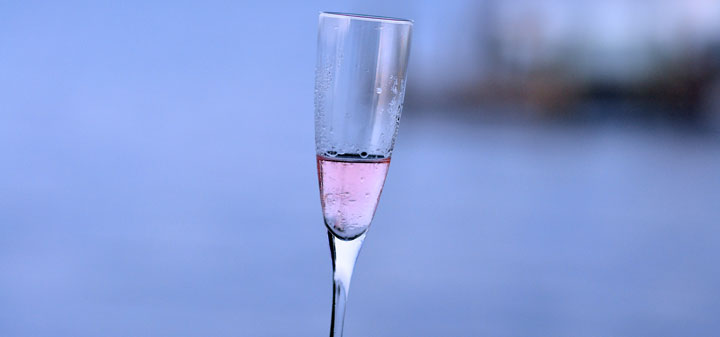
Spumante. Frizzante. Bruto. These aren’t the names of Ancient Roman senators; they’re terms for sparkling Italian wine.
For a nation whose fizzy offerings come in a range of styles as diverse as its designer shoes and handbags, it seems unfair how many of us assume the world of Italian bubbly begins and ends with Prosecco. Yes, it’s impossible to deny the pleasures of downing a bottle on a sticky summer afternoon. But Prosecco’s widespread popularity shouldn’t come at the expense of giving Italy’s other regional sparklers (no pun intended) the boot.
Champagne lovers, for instance, might consider popping a bottle of Franciacorta on the next special occasion. An area in Lombardy whose bubbly wine production began in the 1960’s as an attempt to rival Champage, Franciacorta now crafts some of Italy’s most sophisticated sparklers. Using the traditonal Champagne method (or metodo classico), whereby secondary fermentation occurs in the bottle, Franciacorta also happens to incorporate the main Champagne varietals of Pinot Noir and Chardonnay (with some Pinot Bianco thrown in ocassionally as well). In these Northern Italian hills, however, the grapes assume an identity of their own: often a touch richer than their French role modelsand creamy, with an elegant froth of bubbles. Equally classy are the metodo classico wines of Trento, grown in the Alpine vineyards surrounding the village of Trentino. Their pristine minerality seems directly scraped from the rocky slopes of their mountainside home.
The neighboring vineyards of Piedmont might represent hallowed ground to fans of the broodingly complex Nebbiolo-based wines of Barolo and Barbaresco, but the area isn’t exactly known for it levity. Fortunately, a bit of carbonated comic relief can be found in the region’s effortless, sugar-kissed sparklers, whose low-alcohol makes them perfect for sipping over brunch or with dessert after too many hefty glasses of red. Although the wildly aromatic Moscato D’Asti has recently exploded in popularity as a “gateway wine” for a new audience of drinkers, few have caught onto the similar charms of Bracchetto. A bit like Moscato’s red-skinned cousin, the Bracchetto grape becomes a riot of raspberries and rose petals when translated into sparkling form, with a perfectly calibrated dose of sweetness that teases, rather than cloys.
On the subject of sparkling reds, you probably remember Lambrusco from college as the grapey, headache-inducing liquid you drank, with varying degrees of regret depending on how early your English literature seminar met the following morning. But this fizzy vino rosso from the area of Emilia Romagna has revamped its image. Once available almost exclusively in the region itself, it’s now possible to find top examples of Lambrusco in its tradtional, mouthwateringly dry form—all herbs, fizz and juicy crushed berries. It doesn’t hurt that nothing pairs better with a hunk of Parmesean (also a regional specialty) or a heaping plate of pepperoni pizza. For that matter, the area also adopts its lineup of obscure indigenous grapes—including Trebbiano, Spergola, and Pignoletto, among others—to crank out some cheap yet distinctive sparkling whites, any of which could easily replace that default bottle of Prosecco chilling in the fridge.
Zachary Sussman is a Brooklyn-based wine writer. While not typing or sipping, he manages the Graduate Creative Writing Program at New York University.










